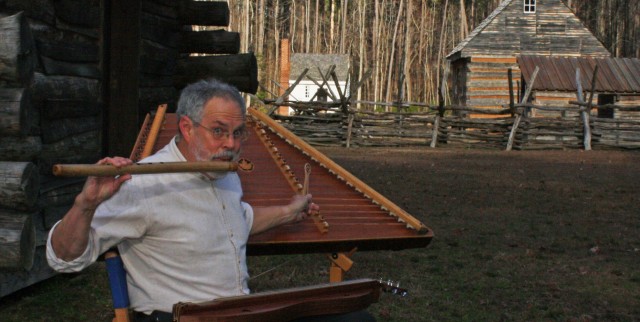The Italian word “tempo” means “time” --- music moving through time at a certain speed, as we generally think of it. But it also involves how we progress through time. Offhand, I can immediately think of three different ways in which the tempo moves. Let’s line them out:
1) Steadily: Like a metronome that ticks away every beat, or, with the human element, moving along pretty nearly like a metronome but with more life to it --- this is the most common tempo motion. In fact, Pop music recordings often utilize a studio “click track” metronome that serves as a reference during the recording process so all the instruments and voices move along together and the song can be set up to be good for dancing. Then in the final mixdown the metronome track is removed. We all need to be able to keep this kind of flow (click track or not) and to keep it consistent, no matter what genre of music we play! Old-Time and Bluegrass music, for example, tend to keep this consistent rhythm. It's the easiest "groove" for an ensemble's members to keep their timing precise.
2) Freely: The opposite extreme involves personal expression as the most important time element: You're getting faster and slower as you feel it. (So the only kind of dancing that can be done here is modern interpretive dancing!) I love to use this method when I play solo unaccompanied bamboo flute on a piece like “Wondrous Love” or in a pentatonic free improvisation. One important thing to remember, though, is that you are indeed moving through time just as you are with a steady beat --- time really does march on no matter what --- so you need to focus on creating a meaningful flow that never “dies in the water,” and great is the responsibility to give a unity to the effect of this freedom from an insistent beat. With freedom comes responsibility! And perhaps most musicians need to limit how much or how often this type of movement is done. It’s a wonderful intro, interlude, or coda, though, in many settings!
I find that playing together with others in a musical environment with free timing requires special adaptations --- for example, when I play hammered dulcimer backup I do drum rolls on single notes or zither-like double-note thirds so there's no percussive attack that needs to be precise at the beginning of the note. Likewise, on the flute I play long notes as a sort of texture, and on guitar I typically do occasional slow strums --- all avoiding the near-impossible task of nailing the unpredictable beat.
3) With rubato: Within the context of a steady beat, a musician can speed up and slow down for expression’s sake without violating the basic motion of the beat, but always getting back into the “groove,” and continuing with the general flow after short meaningful departures. This is a significant and fairly common way of making a tune one’s own and phrasing a musical statement within an established setting. As a soloist, you keep the steady beat going in your head and work off that with your rubato (a really good and important skill to develop, that tempo in your head); and in duets and larger groups the accompanist needs to follow the beat very consistently, allowing the lead artist freedom to have a confident give and take in his own timing.
All three of these approaches can be mixed and matched into an arrangement to give a colorful and compelling effect. In fact, the contrast between a steady beat and freer timing in a piece can be truly thrilling! Consider how these can enhance your next production.





Comments